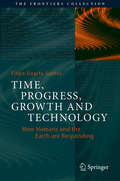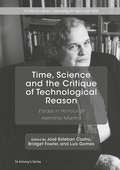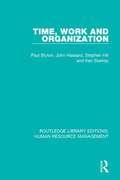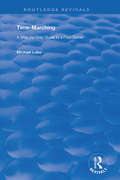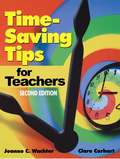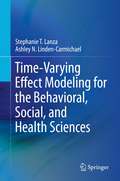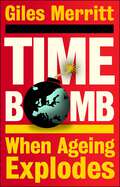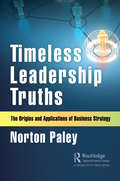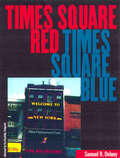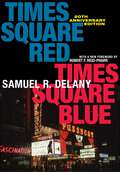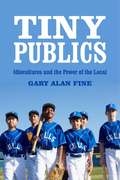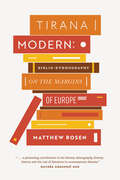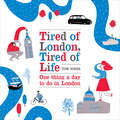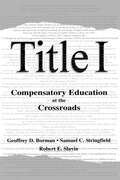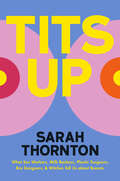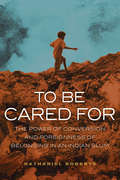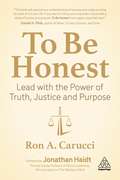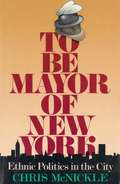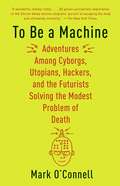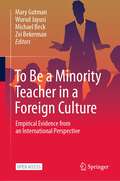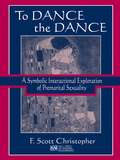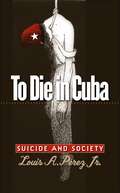- Table View
- List View
Time, Progress, Growth and Technology: How Humans and the Earth are Responding (The Frontiers Collection)
by Filipe Duarte SantosThis book addresses the current challenges of sustainable development, including its social, economic and environmental components. The author argues that we need to develop a new concept of time based on inter-generational solidarity, which focuses both on the long- and the short term. The evolution of man's notions of time are analyzed from prehistory to modern times, showing how these concepts shape our worldviews, our ecological paradigms and our equilibrium with our planet. Practical approaches to dealing with the major medium- and long term sustainability challenges of the 21st century are presented and discussed. This is a thought provoking and timely book that addresses the main global socioeconomic and environmental challenges facing the current and future generations, using science-based analysis and perspectives. It presents an historical narrative of the advent of progress, economic growth and technology, and discusses the structural changes needed to co-create sustainable pathways. It provides hope for our future on Earth, mankind’s common home. António Guterres, Secretary-General of the United Nations This is an amazing, almost mind-boggling book. The author takes a look at the true whole, i.e., the development of the human enterprise since its very beginning. This enterprise is evidently a possibility under the boundary conditions of cosmological dynamics and natural evolution, but evidently also a highly improbable one. It is all but a miracle that the Earth system in its present form exists and happens to support a technical civilization. Will this civilization last long, will it transform itself into something even more exceptional, or will it perish in disgrace?Santos dares to address these grandest of all questions, equipped with a unique transdisciplinary wisdom drawing on physics, cybernetics, geology, biology, economics, anthropology, history, and philosophy. And he dares to dive into the deepest abysses of thinking, where categorial monsters like time and progress lurk. Thereby, he takes us on fascinating journey, during which we perceive and grasp things we have never seen and understood before. One of the best essays I have ever read. John Schellnhuber, founding director of the Potsdam Institute for Climate Impact Research (PIK) and former chair of the German Advisory Council on Global Change
Time, Science and the Critique of Technological Reason: Essays In Honour Of Hermínio Martins (St Antony's)
by Luís Gomes José Esteban Castro Bridget FowlerThis festschrift commemorates the legacy of UK-based Portuguese sociologist Hermínio Martins (1934-2015). It introduces Martins’ wide-ranging contributions to the social sciences, encompassing seminal works in the fields of philosophy and social theory, historical and political sociology, studies of science and technology, and Luso-Brazilian studies, among others. The book features an in-depth interview with Martins, short memoirs, and twelve chapters addressing topics that were central to his intellectual and political interests. Among those that stand out are his critique of Thomas Kuhn’s theory of scientific revolutions, his work on the significance of time in social theory and the interweaving of techno-scientific developments and socio-cultural transformations, including the impact of communication and digital technologies, and of market-led eugenics. Other themes covered are Martins’ work on patrimonialism and social development in Portugal and Brazil, and his analysis of the state of the social sciences in Portugal, which reflects his highly critical appraisal of the ongoing marketization andneoliberalization of academic life and institutions worldwide.
Time, Work and Organization (Routledge Library Editions: Human Resource Management)
by John Hassard Paul Blyton Stephen Hill Ken StarkeyIn this book, first published in 1989, the authors have sought to highlight some of the major themes in the study of time and work within separate but related fields of study. A number of common starting points and issues are examined, alongside the various conclusions which different researchers have drawn together. Working together, the four authors have enriched their individual understanding of worktime through exposure to approaches taken by others working within different discipline boundaries. This title will be of interest to students of business studies.
Time, the City, and the Literary Imagination (Literary Urban Studies)
by Anne-Marie Evans Kaley KramerTime, the City, and the Literary Imagination explores the relationship between the constructions and representations of the relationship between time and the city in literature published between the late eighteenth century and the present. This collection offers a new way of reading the literary city by tracing the ways in which the relationship between time and urban space can shape literary narratives and forms. The essays consider the representation of a range of literary cities from across the world and consider how an understanding of time, and time passing, can impact on our understanding of the primary texts. Literature necessarily deals with time, both as a function of storytelling and as an experience of reading. In this volume, the contributions demonstrate how literature about cities brings to the forefront the relationship between individual and communal experience and time.
Time-Marching: A Step-by-step Guide to a Flow Solver (Routledge Revivals)
by Michael LoboFirst published in 1997, this volume recognises that there are, at present, few if any books on existing CFD codes that are accessible to the academic world in general. And yet such works are of extreme importance if one is to bridge the gap between a CFD course for postgraduate students and the frontiers of current research. This book is especially intended for students commencing research in CFD – taking them step-by-step through the mathematical development of a flow solver.The only pre-requisite to an understanding of this work is a sound knowledge of engineering mathematics. Starting from the governing equations, the author explains the theory behind the time-marching approach and proceeds step-by-step to a complete computer program for the Euler solver in two dimensions. The present work is restricted to two dimensions because in the first instance ideas can be assimilated much more easily in the context of two dimensions.The book is written for research students and users of CFD. The material may be of interest even to those not directly involved with time-marching solvers, and the presentation is simple enough to be followed by course students.
Time-Saving Tips for Teachers (1-off Ser.)
by Joanne C. Wachter Clare CarhartPerfect for teachers who need help managing their time,Time Saving Tips for Teachers is structured for easy use. Flip through the chapters and apply the ideas that fit immediate needs and style—and includes more than sixty reproducible forms that can be used right away, covering student and parent information, reading and writing coaches, homework, standards for assignments, and supplies, just to name a few. New tips include portfolios, substitute teachers, email, handheld computers, and the Internet!Chapters provide ideas on how to save time without diminishing quality by:Communicating effectively—but brieflyManaging materialsPlanning the week aheadLearning to say "No"Using the Internet to save timeWorking with substitutes and volunteersCreating a filing system that saves timeAvoiding distractionsTreating yourself as a professionalThis guide helps teachers work smarter and enjoy life outside of teaching once again!
Time-Varying Effect Modeling for the Behavioral, Social, and Health Sciences
by Stephanie T. Lanza Ashley N. Linden-CarmichaelThis book is the first to introduce applied behavioral, social, and health sciences researchers to a new analytic method, the time-varying effect model (TVEM). It details how TVEM may be used to advance research on developmental and dynamic processes by examining how associations between variables change across time. The book describes how TVEM is a direct and intuitive extension of standard linear regression; whereas standard linear regression coefficients are static estimates that do not change with time, TVEM coefficients are allowed to change as continuous functions of real time, including developmental age, historical time, time of day, days since an event, and so forth.The book introduces readers to new research questions that can be addressed by applying TVEM in their research. Readers gain the practical skills necessary for specifying a wide variety of time-varying effect models, including those with continuous, binary, and count outcomes. The book presents technical details of TVEM estimation and three novel empirical studies focused on developmental questions using TVEM to estimate age-varying effects, historical shifts in behavior and attitudes, and real-time changes across days relative to an event. The volume provides a walkthrough of the process for conducting each of these studies, presenting decisions that were made, and offering sufficient detail so that readers may embark on similar studies in their own research. The book concludes with comments about additional uses of TVEM in applied research as well as software considerations and future directions. Throughout the book, proper interpretation of the output provided by TVEM is emphasized.Time-Varying Effect Modeling for the Behavioral, Social, and Health Sciences is an essential resource for researchers, clinicians/practitioners as well as graduate students in developmental psychology, public health, statistics and methodology for the social, behavioral, developmental, and public health sciences.
Timebomb: When Ageing Explodes
by Giles MerrittAgeing is a timebomb. We celebrate our greater longevity, yet few of us consider its consequences. This book is an important warning that unless Europeans defuse its explosive force, within two decades our societies will be devastated by it. The hard fact is that because our political economies have been built around shorter lifespans, they risk being blown apart by ageing. The pressures exerted by the over-60s, who are increasing from today's quarter of the population to a third, will upend our politics and impoverish our young. Millennials and Gen-Zers are already saddled with their elders' runaway pension and healthcare costs, but are themselves poorer and less privileged. Merritt, a veteran analyst of the European scene, traces the demographic projections that politicians of all persuasions have long ignored, and shines a harsh light on policy shortcomings that must be urgently addressed. For anyone wants a stake in our future, this book is essential reading which clarifies the political choices to be made if comparatively prosperous Europe isn't to die of old age.
Timeless Leadership Truths: The Origins and Applications of Business Strategy
by Norton PaleyThe origins of business strategy are found in military applications. Generals throughout history faced formidable challenges as they crafted plans to outmaneuver competing forces, acquire territory, and gain power. Similarly, business leaders also look to outmaneuver their rivals as they enter new markets against entrenched competitors, secure a strong market position, and expand their companies’ influence. Although the destructive aspects of war are not present in business, there is a reasonable parallel, such as the bankruptcies of once-mighty companies, which resulted in layoffs of thousands of employees and the closings of numerous plants. Then there was the devastating economic impact and societal disruption that created demoralizing misery among large groups of individuals in once-flourishing areas worldwide. The intent of the book is to improve managers’ ability to think strategically. The further aim is to blend the timeless lessons of military strategy into business plans, with impact in grassroots engagement with customers, as well as the inevitable clashes with competitors. In addition, readers can access a body of knowledge that has endured in written form and practiced by successful leaders for centuries. As such, managers will hold a competitive edge in an evolving digital-age marketplace.
Times Square Red, Times Square Blue
by Samuel R. DelanyIf one street in America can claim to be the most infamous, it is surely 42nd Street. Between Seventh and Eighth Avenues, 42nd Street was once known for its peep shows, street corner hustlers and movie houses. Over the last two decades the notion of safety-from safe sex and safe neighborhoods, to safe cities and safe relationships-has overcome 42nd Street, giving rise to a Disney store, a children's theater, and large, neon-lit cafes. 42nd Street has, in effect, become a family tourist attraction for visitors from Berlin, Tokyo, Westchester, and New Jersey's suburbs.Samuel R. Delany sees a disappearance not only of the old Times Square, but of the complex social relationships that developed there: the points of contact between people of different classes and races in a public space. In Times Square Red, Times Square Blue, Delany tackles the question of why public restrooms, peepshows, and tree-filled parks are necessary to a city's physical and psychological landscape. He argues that starting in 1985, New York City criminalized peep shows and sex movie houses to clear the way for the rebuilding of Times Square. Delany's critique reveals how Times Square is being "renovated" behind the scrim of public safety while the stage is occupied by gentrification. Times Square Red, Times Square Blue paints a portrait of a society dismantling the institutions that promote communication between classes, and disguising its fears of cross-class contact as "family values." Unless we overcome our fears and claim our "community of contact," it is a picture that will be replayed in cities across America.
Times Square Red, Times Square Blue 20th Anniversary Edition (Sexual Cultures #47)
by Samuel R. DelanyTwentieth anniversary edition of a landmark book that cataloged a vibrant but disappearing neighborhood in New York CityIn the two decades that preceded the original publication of Times Square Red, Times Square Blue, Forty-second Street, then the most infamous street in America, was being remade into a sanitized tourist haven. In the forced disappearance of porn theaters, peep shows, and street hustlers to make room for a Disney store, a children’s theater, and large, neon-lit cafes, Samuel R. Delany saw a disappearance, not only of the old Times Square, but of the complex social relationships that developed there.Samuel R. Delany bore witness to the dismantling of the institutions that promoted points of contact between people of different classes and races in a public space, and in this hybrid text, argues for the necessity of public restrooms and tree-filled parks to a city's physical and psychological landscape.This twentieth anniversary edition includes a new foreword by Robert Reid-Pharr that traces the importance and continued resonances of Samuel R. Delany’s groundbreaking Times Square Red, Times Square Blue.
Timescapes of Health, Illness and Care
by Katherine Kenny Mia Harrison Anthony K J SmithThis book brings together cutting-edge theoretical work across a range of disciplines in service of developing better understandings of the nature and experience of time in relation to health, illness and care. While the passage of time – smooth or otherwise – is a universal experience, it is often felt acutely in relation to compromised health and/or the need for care. These are key sites for understanding how time is managed and made meaningful in healthcare settings and in everyday life. Timescapes of Health, Illness and Care takes an interdisciplinary and international approach to understanding how considerations of time – its ontological standing, normative value, and embodied and intersubjective experience – are vital to understanding experiences of health and illness, the governance of healthcare institutions, and the cultures that circulate around (and often obscure) informal care.
Tiny Publics: A Theory of Group Action and Culture
by Gary Alan FineIf all politics is local, then so is almost everything else, argues sociologist Gary Alan Fine. We organize our lives by relying on those closest to us—family members, friends, work colleagues, team mates, and other intimates—to create meaning and order. In this thoughtful and wide-ranging book, Fine argues that the basic building blocks of society itself are forged within the boundaries of such small groups, the "tiny publics" necessary for a robust, functioning social order at all levels. Action, meaning, authority, inequality, organization, and institutions all have their roots in small groups. Yet for the past twenty-five years social scientists have tended to ignore the power of groups in favor of an emphasis on organizations, societies, or individuals. Based on over thirty-five years of Fine's own ethnographic research across an array of small groups, Tiny Publics presents a compelling new theory of the pivotal role of small groups in organizing social life. No social system can thrive without flourishing small groups. They provide havens in an impersonal world, where faceless organizations become humanized. Taking examples from such diverse worlds as Little League baseball teams, restaurant workers, high school debate teams, weather forecasters, and political volunteers, Fine demonstrates how each group has its own unique culture, or idioculture—the system of knowledge, beliefs, behavior, and customs that define and hold a group together. With their dense network of relationships, groups serve as important sources of social and cultural capital for their members. The apparently innocuous jokes, rituals, and nicknames prevalent within Little League baseball teams help establish how teams function internally and how they compete with other teams. Small groups also provide a platform for their members to engage in broader social discourse and a supportive environment to begin effecting change in larger institutions. In his studies of mushroom collectors and high school debate teams, Fine demonstrates the importance of stories that group members tell each other about their successes and frustrations in fostering a strong sense of social cohesion. And Fine shows how the personal commitment political volunteers bring to their efforts is reinforced by the close-knit nature of their work, which in turn has the power to change larger groups and institutions. In this way, the actions and debates begun in small groups can eventually radiate outward to affect every level of society. Fine convincingly demonstrates how small groups provide fertile ground for the seeds of civic engagement. Outcomes often attributed to large-scale social forces originate within such small-scale domains. Employing rich insights from both sociology and social psychology, as well as vivid examples from a revealing array of real-work groups, Tiny Publics provides a compelling examination of the importance of small groups and of the rich vitality they bring to social life. A Volume in the Russell Sage Foundation Series on Trust
Tirana Modern: Biblio-Ethnography on the Margins of Europe
by Matthew RosenGuided by the thesis that literature can transform social reality, Tirana Modern draws on ethnographic and historical material to examine the public culture of reading in modern Albania. As its starting point, this book asks: How has Albanian literature and literary translation shaped social action during the longue durée of Albanian modernity?Drawing on material collected through fieldwork with a community of readers, writers, and translators attached to the independent Albanian publisher Pika pa sipërfaqe (Point without Surface), Tirana Modern provides a tightly focused ethnography of literary culture in Albania that brings into relief the more general dialectic between social imagination and social reality as mediated by reading and literature.
Tired of London, Tired of Life: One Thing A Day To Do in London
by Tom JonesA charming and inspiring book of 365 things to do in London. Beautifully illustrated with bitesize entries ranging from the well-known to the quirky, this is the perfect gift for anyone wanting to discover all of the gems London has to offer...'One thing to do every day that'll stop you getting tired of the big smoke.' -- The Guardian'A great way to explore London!' -- ***** Reader review'Great fun and great information' -- ***** Reader review'Great book to dip into. Always find something new to do/somewhere new to go' -- ***** Reader review'A brilliant book with fascinating ideas to do around the city' -- ***** Reader review******************************************************************************************************As the late great Samuel Johnson sagely observed, 'When a man is tired of London, he is tired of life.'When author Tom Jones found himself doing the same things week in, week out while living in England's treasured capital, he decided to heed Johnson's words and seek out a thing to do each day in London to make him fall back in love with the city.Here, in Tired of London, Tired of Life, Tom shares the fun, diverting and imaginative things that you can do to keep yourself amused in London. With seasonally appropriate suggestions for each day of the year, you can explore East London by canoe, search for Fagin's lair in Clerkenwell, play petanque in Southwark, seek out Aphrodite in the British Museum on Valentine's Day and enjoy a host of unusual ways to enjoy the capital.So grab your A-Z and start discovering a whole other side to this majestic city!
Title I: Compensatory Education at the Crossroads (Sociocultural, Political, and Historical Studies in Education)
by Robert E. Slavin Samuel C. Stringfield Geoffrey D. BormanThe authors present evidence and theory that explain the positive trend for Title I effects and the recent leveling of this trend in program outcomes. They document the finding that Title I has had a modest positive impact on student achievement.
Tits Up: What Sex Workers, Milk Bankers, Plastic Surgeons, Bra Designers, and Witches Tell Us about Breasts
by Sarah ThorntonAn innovative investigation of the five strange worlds that worship women’s chests. After years of biopsies, best-selling author Sarah Thornton made the difficult decision to have a double mastectomy. But, after her reconstructive surgery, she was perplexed: What had she lost? And gained? An experienced sleuth, she resolved to venture behind the scenes to uncover the social and cultural significance of breasts. Riotous and galvanizing, Tits Up excavates the diverse truths of mammary glands from the strip club to the operating room, from the nation’s oldest human milk bank to the fit rooms of bra designers. Thornton draws insights from plastic surgeons, lactation consultants, body-positive witches, lingerie models, and “free the nipple” activists to explore the status of breasts as emblems of femininity. She examines how women’s chests have become a billion-dollar business, as well as a stage for debates about race, class, gender, and desire. Everywhere she turns, Thornton encounters chauvinist myths about this elemental body part that quietly justify deficits in women’s bodily autonomy and endorse shortfalls in their political status. Blending sociology, reportage, and personal narrative with refreshing optimism and wit, Thornton has one overriding ambition—to liberate breasts from centuries of patriarchal prejudice.
To Be Cared For: The Power of Conversion and Foreignness of Belonging in an Indian Slum
by Nathaniel RobertsTo Be Cared For offers a unique view into the conceptual and moral world of slum-bound Dalits ("untouchables") in the South Indian city of Chennai. Focusing on the decision by many women to embrace locally specific forms of Pentecostal Christianity, Nathaniel Roberts challenges dominant anthropological understandings of religion as a matter of culture and identity, as well as Indian nationalist narratives of Christianity as a "foreign" ideology that disrupts local communities. Far from being a divisive force, conversion integrates the slum community--Christians and Hindus alike--by addressing hidden moral fault lines that subtly pit residents against one another in a national context that renders Dalits outsiders in their own land."
To Be Honest: Lead with the Power of Truth, Justice and Purpose
by Ron A. CarucciUnder what conditions will people tell the truth, behave fairly and act with purpose at work? And when will they lie, cheat and be selfish?Based on 15 years of research, To Be Honest explains how four factors (Clear Identity, Accountability, Governance and Cross-Functional Relationships) affect honesty, justice and purpose within a company. When these factors are absent or ineffective, the organizational conditions compel employees to choose dishonesty and self-interest. But when done well, the organization is 16 times more likely to have people tell the truth, behave fairly and serve a greater good.To Be Honest shares the stories of leaders who have acted with purpose, honesty and justice even when it was difficult to do so. In-depth interviews with CEOs and senior executives from exemplar companies such as Patagonia, Cabot Creamery, Microsoft and others reveal what it takes to build purpose-driven companies of honesty and justice. Interviews with thought leaders like Jonathan Haidt, Amy Edmondson, Dan Ariely and James Detert offer rich insights on how leaders can become more honest and purposeful. You'll learn how Hubert Joly took Best Buy from a company on the brink of bankruptcy to one that is profitable, thriving and purposeful. Filled with real-life examples, To Be Honest offers actionable steps, practical tools and approaches that any leader or manager can use to create a culture of purpose, honesty and justice.
To Be Mayor of New York: Ethnic Politics in the City (Columbia History of Urban Life)
by Chris McNickleFrom Tammany Hall to the election of David Dinkins, To Be Mayor of New York offers insights into the effect of ethnic competition on the demise of urban political machines.Beginning with a colorful assessment of New York City's Tammany Hall as it existed in the late nineteenth century, McNickle traces the effect of the arrival of large numbers of Jewish and Italian immigrants -and later black and Puerto Rican migrants- on the Irish-dominated political machine. He focuses on the political passage of Jewish immigrants through the various small parties unique to New York -socialist, American Labor, and Liberal. Later he describes their attraction to various factions of the traditional Democratic and Republican parties. He spotlights the willingness of large numbers of Jewish voters to cast ballots for third-party candidates on the basis of their shared philosophical commitments and political priorities. McNickle then examines mayoral campaigns between 1945, the end of the LaGuardia era, and 1989, during which the Irish receded and Jews and later African-Americans emerged as the most important ethnic groups in local politics. To Be Mayor of New York offers the most complete study of the development of Jewish political participation in New York. Placing a rise of the New York City Reform Movement in historical perspective, the author explains the election of New York's first Jewish mayor, Abe Beame, and the first African-American mayor, David Dinkins, as part of the political evolution of both these groups.
To Be a Jew: A Guide to Jewish Observance in Contemporary Life
by Hayim H. DoninThe classic guide to the ageless heritage of JudaismEmbraced over many decades by hundreds of thousands of readers, To Be a Jew offers a clear and comprehensive introduction to traditional Jewish laws and customs as they apply to daily life in the contemporary world. In simple and powerful language, Rabbi Hayim Halevy Donin presents the fundamentals of Judaism, including the laws and observances for the Sabbath, the dietary laws, family life, prayer at home and in the synagogue, the major and minor holidays, and the guiding principles and observances of life, such as birth, naming, circumcision, adoption and conversion, Bar-mitzvah, marriage, divorce, death, and mourning. Ideal for reference, reflection, and inspiration, To Be a Jew will by greatly valued by anyone who feels that knowing, understanding, and observing the laws and traditions of Judaism in daily life is the essence of what it means to be a Jew.
To Be a Machine: Adventures Among Cyborgs, Utopians, Hackers, and the Futurists Solving the Modest Problem of Death
by Mark O'ConnellAn eye-opening journey into a world of visionaries, billionaires, and eccentrics harnessing technology for nothing less than the salvation of mankindTranshumanism is a movement pushing the limits of our bodies—our capabilities, intelligence, and lifespans—in the hopes that, through technology, we can become something better than ourselves. It has found support among Silicon Valley billionaires and some of the world’s biggest businesses. In To Be a Machine, journalist Mark O'Connell explores the staggering possibilities and moral quandaries that present themselves when you of think of your body as a device. He visits the world's foremost cryonics facility to witness how some have chosen to forestall death. He discovers an underground collective of biohackers, implanting electronics under their skin to enhance their senses. He meets a team of scientists urgently investigating how to protect mankind from artificial superintelligence.Where is our obsession with technology leading us? What does the rise of AI mean not just for our offices and homes, but for our humanity? Could the technologies we create to help us eventually bring us to harm? Addressing these questions, O'Connell presents a profound, provocative, often laugh-out-loud-funny look at an influential movement. In investigating what it means to be a machine, he offers a surprising meditation on what it means to be human.
To Be a Minority Teacher in a Foreign Culture: Empirical Evidence from an International Perspective
by Michael Beck Zvi Bekerman Mary Gutman Wurud JayusiThis open access book offers in depth knowledge on the challenges and opportunities offered by the inclusion of minority teachers in mainstream educational settings from an international perspective. It aims to be a unique and important contribution for scholars, policy-makers, and practitioners considering the complexities brought about by global trends into national/local educational systems and settings. It will also serve to guide future research, policy, and practice in this important field of inquiry. The work will contribute answers to questions such as: How do immigrant/minority teachers experience their work in mainstream educational settings?; How do mainstream shareholders experience the inclusion of immigrant/minority teachers in mainstream educational settings?; What is the effect of the successful (and/or unsuccessful) integration of minority teachers and teacher educators into mainstream education settings?.
To Dance the Dance: A Symbolic Interactional Exploration of Premarital Sexuality (LEA's Series on Personal Relationships)
by F. Scott ChristopherThis pioneering monograph integrates the major research findings of the past four decades and offers a new model for the study of human sexuality. The author examines the empirical literature on sexuality for the developmental stages of childhood, adolescence, and young adulthood and for experiences of sexual aggression. He then uses symbolic interactionism to develop a theoretical model which integrates the research across the developmental periods and for instances of sexual aggression, providing one of the most comprehensive views of sexuality development that has yet been offered. The work investigates the role of family, peers, romantic partners, and personality in the development of sexual expression and offers a unique vision of how symbolic interactionism can inform one's understanding of sexual beliefs and behaviors through the developmental stages. By acknowledging developmental differences and changes in individuals and their interpersonal relationship context, a more integrated understanding emerges of how sexuality develops. This volume is intended for students and scholars interested in the influences on the development of sexual expression of youth and young adults. It will be of great interest to readers in psychology, family studies, communication, sociology, adolescent studies, and specialized areas of sexuality research. It is appropriate for undergraduate seminars and graduate-level courses on human sexuality, close relationships, family theory, sociology, communication, social psychology, developmental psychology, and related areas.
To Die in Cuba
by Louis A. PérezFor much of the nineteenth century and all of the twentieth, the per capita rate of suicide in Cuba was the highest in Latin America and among the highest in the world--a condition made all the more extraordinary in light of Cuba's historic ties to the Catholic church. In this richly illustrated social and cultural history of suicide in Cuba, Louis A. Perez Jr. explores the way suicide passed from the unthinkable to the unremarkable in Cuban society.In a study that spans the experiences of enslaved Africans and indentured Chinese in the colony, nationalists of the twentieth-century republic, and emigrants from Cuba to Florida following the 1959 revolution, Perez finds that the act of suicide was loaded with meanings that changed over time. Analyzing the social context of suicide, he argues that in addition to confirming despair, suicide sometimes served as a way to consecrate patriotism, affirm personal agency, or protest injustice. The act was often seen by suicidal persons and their contemporaries as an entirely reasonable response to circumstances of affliction, whether economic, political, or social.Bringing an important historical perspective to the study of suicide, Perez offers a valuable new understanding of the strategies with which vast numbers of people made their way through life--if only to choose to end it. To Die in Cuba ultimately tells as much about Cubans' lives, culture, and society as it does about their self-inflicted deaths.For much of the nineteenth century and all of the twentieth, the per capita rate of suicide in Cuba was the highest in Latin America and among the highest in the world--a condition made all the more extraordinary in light of Cuba's historic ties to the Catholic church. In this richly illustrated social and cultural history of suicide in Cuba, Louis A. Perez Jr. explores the way suicide passed from the unthinkable to the unremarkable in Cuban society. To Die in Cuba ultimately tells as much about Cubans' lives, culture, and society as it does about their self-inflicted deaths.-->
